Magic Mountain’s Next Act
Like pulling a rabbit out of a hat, Magic Mountain is back with a retro, badass, soul-filled vengeance.
On a sunny day last March, Rich Hart, a 44-year-old builder from Southington, Ct., stood at the base of Magic wearing a skin-tight, green racing suit and holding a beer. It was noon. The beer was not his first of the day.
“I’m pumped, but it’s going to be solid,” he said, looking up at the north face of Glebe Mountain. A thin layer of fresh snow covered a base that had hardened over spring’s freeze/thaw cycles into white asphalt. Hart furrowed his brows, eyeing the top of the mountain and what has been billed as the steepest and toughest terrain in southern Vermont, with as much as a 45-degree pitch in places. Snaking off the summit were 39 trails and 11 glades, many of them old-school runs rolling down 1,500 feet of vertical over the natural terrain, plunging down ledges and snaking through tight trees.
Next to Hart stood Zack Wilkins, a 24-year-old ski shop employee who lives in Killington.
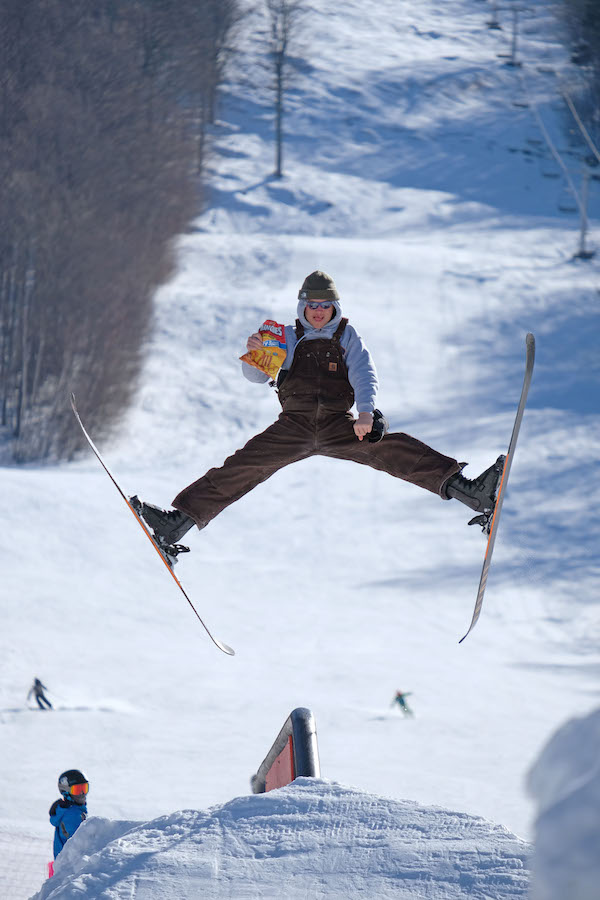
“Now this is the guy I’ll need to beat,” Hart said, nodding to Wilkins, who was dressed in a baggy Fly Low parka and pants. “That’s why the speed suit—I won’t be flapping around as much as Zack here,” Hart ribbed his friend.
The “race,” the Master of the Mountain Extreme Biathlon, was set to start at 1 p.m., to “crown the best overall skier or rider in the East.” A combination freeskiing competition and giant slalom, the Master of the Mountain sends competitors down the bumps of Witch, where they are judged on air, line, fluidity and speed, on down Black Line trail down to where a series of gates are set up. Overall time, top to bottom, is part of what makes a winner, but contenders are given points for jumps, style and control as well. At stake: a $1,500 prize purse.
Wilkins, the defending champion, had already won one of Magic’s trio of extreme events. On Feb. 2, 2019 he captured first place in The Road to Ruin, basically a Chinese downhill where heats of racers take off in a no-gates mad dash to the bottom. Wilkins won that and a check for $1,000.
Both men had also competed in Tuck It! on Dec. 31—a straight-out, no-gates speed test. “We both clocked 70- to 71- mph,” Hart said. “But we didn’t win.”
As they talked, kids were shrieking with laughter as they barreled down a tubing park set up adjacent to Hocus Pocus. A guy on a Sno Go ski bike, a bike with a forward ski and two back skis, carved down the mountain and skidded to a stop, music blaring from a speaker mounted on the handlebars. “A lot of places wouldn’t let me use this on the slopes,” said the rider, Robert Dunn, who drives to Magic on weekends from New Jersey. “I just asked Geoff about it and he said ‘Sure, if you can handle this.’ Geoff’s done an awesome job with this place.”
He nodded at Wilkins and Hart, then headed off for another run.
Resurrecting Soul
The trio of races are just a taste of the out-of-the box thinking that’s made Magic Mountain’s latest act one that you don’t want to miss. “We’re trying to make skiing fun again and bring back some of the soul of skiing,” said Geoff Hatheway, the general manager, watching the action from the deck of the Black Line Tavern, where he sat in the announcers’ chair.
Hatheway, a Dartmouth grad and marketing veteran, has seen Magic through a series of owners and financial ups and downs. He grew up as a weekend skier, commuting from Westchester, N.Y. to spend weekends at the farmhouse his parents bought in Jamaica, Vt., a place that had no electricity at the time and operated on a generator. “I kept coming up after I was married, mainly skiing Stratton. Then one day after we had kids, we started to ski Magic. There were no lines. It had this old-school, relaxed vibe and I loved it.” He loved it so much that he left New York and went to work as the area’s marketing director from 2011 to 2014, a period during which Magic stood on shaky financial ground. Then, in 2016, after a season of terrible snow and an early season closing, Hatheway succeeded in rallying a group of 16 investors, a group he describes as “half local skiers who are in it for the passion, the other half, buddies from Dartmouth who look at this as a business.”
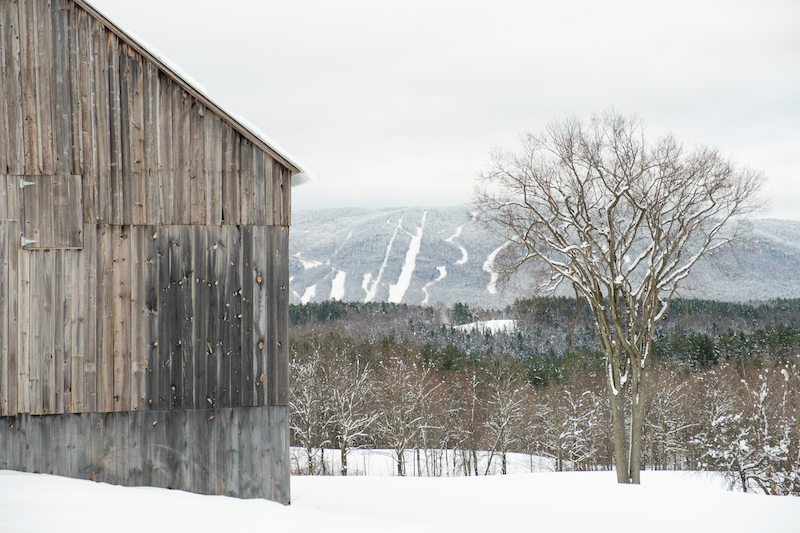
They formed Ski Magic LLC, bought the area and set up a five-year plan. “Magic would have not opened (for the 2016-17 season) if we hadn’t come along and bought it,” Hatheway told The Brattleboro Reformer at the time. The new owners opened the tubing park that December and by February were drawing record crowds. On some weekends so many people showed up they had to close the ticket window. Since then, as Hatheway says, “If we fill up the parking lots we stop selling lift tickets. We don’t want this place to get too crowded.” “Too crowded” today means 2,000 skiers.
And the team has found plenty of creative ways to fill the parking lots. With a “Throwback Card” ($139 up front) lift tickets on any day are just $29 and on Friendly Fridays, people who carpool can get up to four tickets per vehicle for a total of $149. Season passes at Magic cost $779 and include a Freedom Pass, which gives you three days of free skiing at 18 other “soul-filled” resorts including Bolton Valley, Vt. This season, Magic was also one of three Vermont resorts (along with Bolton Valley and Suicide Six) to join the Indy Pass, which offers two days of skiing at each of 44 small ski areas across the country for less than $200.
If you only want to ski holidays, the $270 White Out Pass can let you escape to Magic during
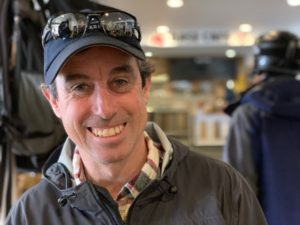
Christmas week, Martin Luther King weekend and President’s Week. Magic, which is typically open Thursday through Sunday (with the occasional powder day opening), also rents the whole mountain for private parties, midweek. And uphill skiers get one free lift ride (except on powder days).
On the day the Mountain Man Extreme was held, there was a five-minute line at the Red Chair, with strangers chatting as Louis Armstrong’s deep-throated “What a Wonderful World” echoed out from speakers.
After snaking through the singles line I found myself on the lift with Jon Blatchford, president at the time of J.K. Adams in Manchester. “This place on a powder day is hard to beat,” he said pointing out tight trees where the snowpack would deepen and hold on the steeper slopes. “And you can always ski the old trails over on Timber Ridge,” he noted, referring to the area that was connected to Magic on the backside of the mountain by a trail in the 1980s. The two areas operated in tandem for a few seasons. Then, following some lean years, both mountains were shuttered in 1990 and Magic didn’t reopen until 1997.
Part of Hatheway’s five-year plan to pull Magic out of the hat has been to gradually upgrade the lifts, which are known by color. In the first year, the new LLC added a magic carpet lift for beginners and a mid-mountain station on the Green Chair, giving skiers a chance to ski the lower, intermediate slopes without riding all the way up to the steeper terrain. In fall of 2019, the Black Chair was replaced with a quad (which was moved over from Stratton) with 158 four-person chairs and a capacity of 2,000 skiers per hour, rising over a new black diamond trail. The chair it replaced, the Black Chair triple, carried 620 riders per hour. In June, 2019 Magic received Act 250 approval to double the size of its snowmaking pond, bringing it up to 9 million gallons which will allow coverage of 60 percent of the terrain by next season. “We’re a skiers and riders mountain and we’re putting the money into skiing, not hotels and waterparks,” says Hatheway.
And other than a clean makeover of the base lodge, where barnboard wainscotting and wooden picnic tables give the space a sort of Instagram-able chic, it’s hard to tell that it’s 2019.
Retro Revisited
Magic is not your grandfather’s ski hill, but it does have a strikingly back-to-the-future feel, as if you can still hear the echoes of a yodel reverberating off the hillside. The influence of its founder, Swiss ski instructor Hans Thorner is everywhere. Thorner arrived from the Alps in 1932 and built an inn in Franconia, N.H., Thorner House, that hosted the likes of Zsa Zsa Gabor and the Kennedys. He made ski films for Swiss Air and about the 1948 Winter Olympics and was, his granddaughter Allison Thorner remembers, a legendary storyteller. “He was The Magician. He could make anything sound so good you wanted to have a part of it.”
Above: As you approach Magic (1), you might think you had happened upon a Swiss village. In The Road to Ruin event, heats of skiers take off in a Chinese downhill race to the base (2). Many of the homes and inns built by the Swiss ski instructors Hans Thorner brought to Vermont in the 1960s remain. Several, such as the Blue Gentian (3) and Snowdon Lodge still take guests.
Thorner scouted all of New England for a place to create his own ski resort and came upon Glebe Mountain. He and his sons Peter and Arthur began cutting trails and putting up lifts and in 1962 opened Magic Mountain. Soon, Swiss-style chalets popped up around the base. Some, such as Blue Gentian and Snowdon Chalet still house guests and many of the newer buildings give a nod to Tyrolean architecture.
Thorner’s goal was to transform the slopes and land around Glebe Mountain into a something “more Swiss than a Swiss watch.” He invited Switzerland’s top ski instructors to come to Vermont, and to teach at the area he named after Thomas Mann’s book, The Magic Mountain. “He named it that because the sanatorium in Mann’s book was a place of healing, a place where people could relax and enjoy themselves. But I think also because it was also always a little crazy,” recalls Thorner’s granddaughter, Allison.
“My grandfather hired the best looking Swiss ski instructors and made sure the best looking women, all dressed in authentic dirndls, served at the Abracadabra Lounge—now the Black Line Tavern. He told them to ‘cultivate’ their Swiss accents and that it ‘vaz good fer der bizzyness’ and in the evenings they would line up in formation for a perfect torchlight parade. A few of them played in a rock band, The Blackbirds, and there was always music and dancing in the Lounge.” She also remembers races not unlike the Mountain Man Extreme that would pit ski instructors against ski patrollers, with each racer having to both ski gates and pull a sled down the run. “And then there were these guys who would hang glide off the top and land in the parking lot in the spring and summer.”
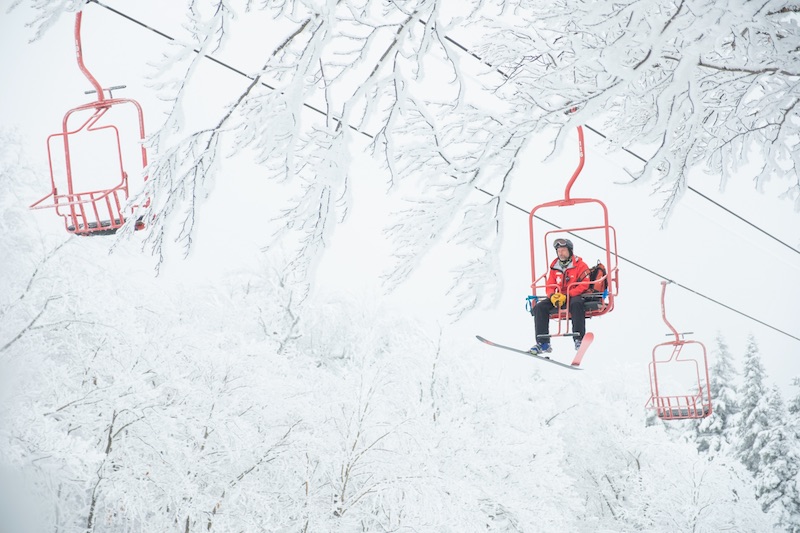
Growing up, Magic was the Thorners’ family business. Allison’s father Arthur ran the lifts and operations and uncle Peter, the ski patrol and food and beverage. They blasted the trails and put in the lifts themselves. And they helped develop the small Swiss-style village at the base.
But Thorner stopped short of following the path Austrian Pepi Gramshammer was taking in Vail, Colo. As Thorner told The New York Times in 1973, “I’m not against expansion but try to pick my expansion. I’m partial to those seeking housing themselves rather than to those interested in creating and selling housing to others. We like to have skiers come in who are ready to show personal and sentimental involvement. They make good neighbors.”
“Today, many of those neighbors, both local Vermonters and some of the early families from Connecticut and New York are returning. Many of them still own houses at the base and they come up in the fall and volunteer to help cut glades and clear brush from the slopes, which at one time had sheep grazing on them,” Allison Thorner recalls. “When I hear about people moving back I think: Why wouldn’t you? Growing up there was, well, magical. Here we were on a dirt road, with a mountain to play on in the back yard. I think we even had a horse and sleigh. It was like living in a bubble. It wasn’t always easy or fun, but these days I think that bubble is not such a bad place to be,” she says.
And that bubble still draws some of the best skiers in the East here as season pass holders, weekenders and racers alike come for events such as the Ski the East Freeride Tour or the Master of the Mountain Extreme.
Extreme Skiing, Shovel races and a Flamingo toss
At the top of the Mountain Man Extreme course, a crowd of two dozen racers gathered. One by one, racers headed down. It was icy. There were exposed rocks and moguls as hard as granite. Some skiers, like Clark Macomber, floated through conservatively and launched into the air every now and then. Others blazed down, borderline in control but going as fast as they could. John Hatheway (Jeff’s nephew) who serves as the staff photographer, guided a drone over the course capturing the action.
Then it came time for Wilkins, the defending champ, to compete. He skied the top part well, hit
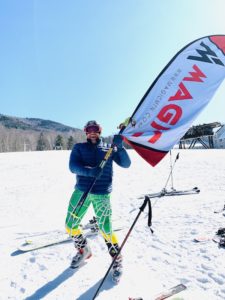
a bump, threw huge air, and spread his skis wide, poles and fists down. He sailed up, and up, until at least 14 feet of air was between him and the ground below and then landed.
There was another jump Wilkins had eyed down the slope and he hit that one too and blew up in a yard sale that had him hunting and pecking for gear. Not far behind, Hart replicated Wilkins’ run with a jump nearly as big. He landed with a thud and a grunt that was so loud it cracks up the judges who were watching, trailside.
In the end, the big prize went to Clark Macomber, a 22-year-old senior at St. Lawrence University. Macomber, a slalom and GS ski racer with FIS points seemed as comfortable in the air as he did in the gates.
“I didn’t even know the race was going on,” said Macomber after the race. “I came down to ski for the weekend with my buddy who lives in the area and just decided to enter last minute. I’m not really great as a freeskier but I know how to go fast and I loved this terrain.”
The race was done but that didn’t mean the fun stopped. At the Black Line Tavern one of the weekly bands set up, part of a music lineup that’s made Magic a go-to place for both skiers and non-skiers.
And though it was March, the season was far from over. Still coming up was the Shovel Race, which is, you guessed it, a chance to ride a shovel down the slopes. And there was also the Flamingo Toss (riders of the Red Chair are handed pink flamingos to toss into a bucket, part way up) and then a final barbecue and beach bar up on Sunshine Corner halfway up the mountain, up near the ledge where Hans Thorner and his wife Florence’s ashes were scattered.
“That barbecue up on the mountain, it was a rite of spring, something we always loved,” said Allison Thorner, a bit wistfully. Her father Peter, in his ‘80s, still lives in the area.
“I talk to Peter about once a week,” Geoff Hatheway says. And in some ways, Hatheway seems to be channeling that original magician Hans Thorner, every day.
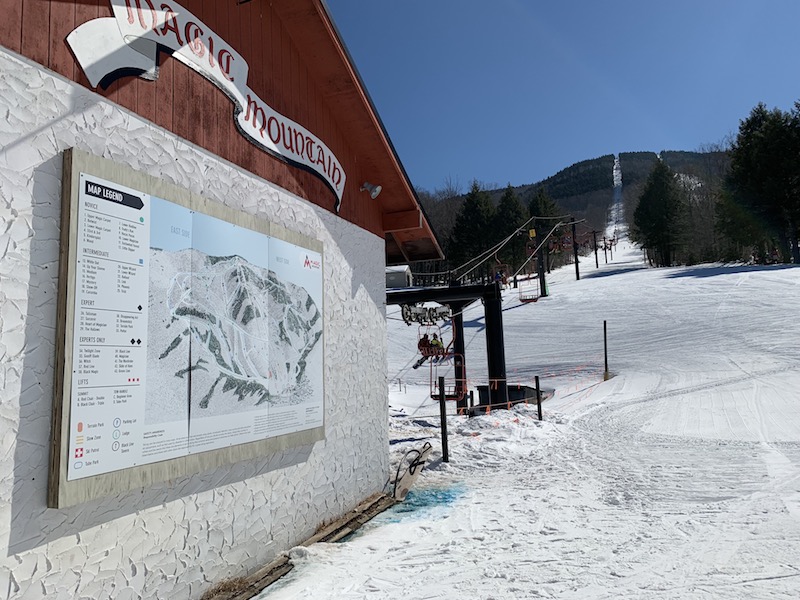
Featured Photo: After a good storm, Magic will sometimes open for a surprise mid-week powder day. When it does, skiers from all over Vermont head to its steep and deep glades. Photo by John Hatheway
Correstion: A previous version mistakenly identified John Hatheway as Geoff Hatheway’s son. He is his nephew.

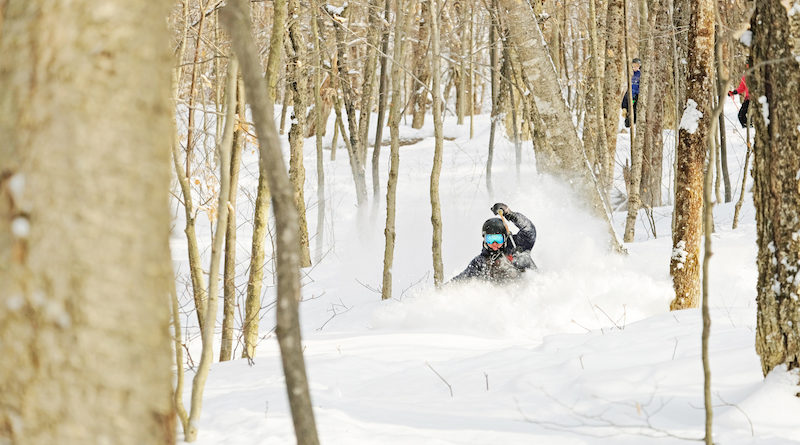
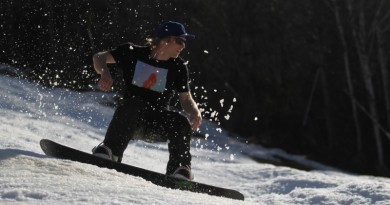
Pingback: What Winter Storm Ezekiel Brought Vermont – VT SKI + RIDE
Pingback: New Lifts, Terrain Parks and Grub – VT SKI + RIDE